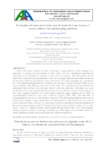Use este identificador para citar ou linkar para este item:
http://www.alice.cnptia.embrapa.br/alice/handle/doc/1071706Registro completo de metadados
| Campo DC | Valor | Idioma |
|---|---|---|
| dc.contributor.author | GUIMARÃES, C. M. | pt_BR |
| dc.contributor.author | STONE, L. F. | pt_BR |
| dc.contributor.author | BRITO, G. G. de | pt_BR |
| dc.contributor.author | HEUERT, J. | pt_BR |
| dc.date.accessioned | 2017-06-29T11:11:11Z | pt_BR |
| dc.date.available | 2017-06-29T11:11:11Z | pt_BR |
| dc.date.created | 2017-06-29 | pt_BR |
| dc.date.issued | 2017 | pt_BR |
| dc.identifier.citation | Revista Ambiente & Água, Taubaté, v. 12, n. 4, p. 629-642, jul./ago. 2017. | pt_BR |
| dc.identifier.issn | 1980-993X | pt_BR |
| dc.identifier.uri | http://www.alice.cnptia.embrapa.br/alice/handle/doc/1071706 | pt_BR |
| dc.description | Due to the current scarcity of water, which may be aggravated by climate changes, it is important to develop cultivars tolerant to water stress. For this, information regarding the variability of the tolerance of cultivars to this stress is required. This information can be obtained by using phenotyping platforms, which allow a large-scale and automated assessment of crop traits related to productivity under water stress. This study took place in a greenhouse and used a phenotyping platform to evaluate some agronomic and physiological traits of two cotton cultivars with differing tolerances to this stress. The experiment was performed in a randomized block design, in a split-plot scheme with four replicates. The main plots were composed of five water regimes and the subplots of two cultivars, Acala SJ 2 and Auburn 2. The water regimes consisted of a well-irrigated treatment (daily replacement of 100% of evapotranspired water) and four water restriction regimes (20%, 40%, 60% and 80% of evapotranspired water at the well-irrigated treatment). The phenotyping platform and protocol (different percentages of daily replacement of evapotranspired water) employed were suitable to the evaluated cotton cultivars for water-stress tolerance, and allowed the determination of the cultivar most tolerant (Acala SJ 2) and of the cultivar most sensitive (Auburn 2) to water stress. 'Acala SJ 2' displayed better physiological and agronomic traits in all water regimes, including higher root density in the upper soil layer, as well as higher water use than ?Auburn 2?, which explained its higher seed yield under the conditions employed. | pt_BR |
| dc.language.iso | eng | eng |
| dc.rights | openAccess | eng |
| dc.subject | Irrigation protocol | pt_BR |
| dc.title | Evaluation of water-stress tolerance of Acala SJ 2 and Auburn 2 cotton cultivars in a phenotyping platform. | pt_BR |
| dc.type | Artigo de periódico | pt_BR |
| dc.date.updated | 2017-06-29T11:11:11Z | pt_BR |
| dc.subject.thesagro | Algodão | pt_BR |
| dc.subject.thesagro | Gossypium hirsutum | pt_BR |
| dc.subject.thesagro | Características agronômicas | pt_BR |
| dc.subject.thesagro | Resistência a seca | pt_BR |
| dc.subject.nalthesaurus | Cotton | pt_BR |
| dc.subject.nalthesaurus | Agronomic traits | pt_BR |
| riaa.ainfo.id | 1071706 | pt_BR |
| riaa.ainfo.lastupdate | 2017-06-29 | pt_BR |
| dc.contributor.institution | CLEBER MORAIS GUIMARAES, CNPAF; LUIS FERNANDO STONE, CNPAF; GIOVANI GREIGH DE BRITO, CPACT; JAIR HEUERT, CNPA. | pt_BR |
| Aparece nas coleções: | Artigo em periódico indexado (CNPAF)  | |
Arquivos associados a este item:
| Arquivo | Descrição | Tamanho | Formato | |
|---|---|---|---|---|
| CNPAF2017aa.pdf | 454,29 kB | Adobe PDF |  Visualizar/Abrir |









